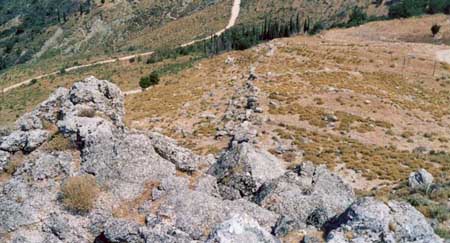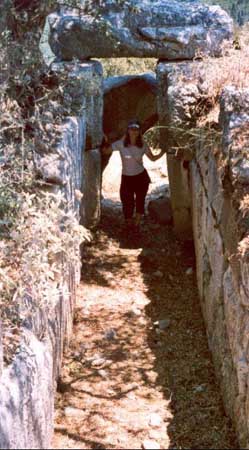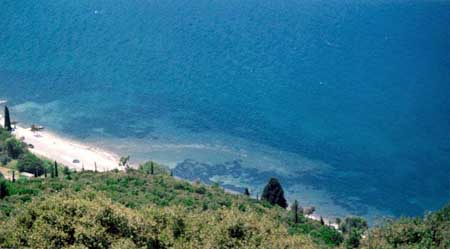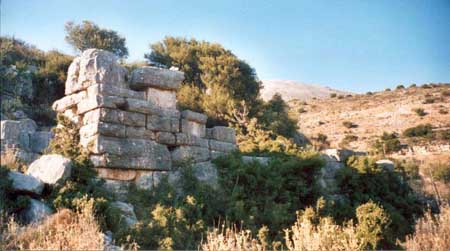Greece. Kephallénia
CLASSICAL ANTIQUITY
Apart from the city centre of Krane and a very few remains at Pale etc., ancient walls only seem to have been preserved in the eastern parts of Kephallénia. Planned walled cities, in various states of completion, have been found at Same, Pronnoi, Poros, and Krane. Smaller architectural sites, fortresses, towers, etc., are also known.

Pronnoi/Palaikastro, ancient city/medieval castle. Outer wall of acropolis.
While the Kephallénian poleis have a long history of their own, the enceintes, the fine planned city- and townscapes, etc., are seemingly mostly the result of "foreign" intervention. Athens was the major external power on Kephallénia during the mid- to late fifth, and, especially, the early fourth centuries BC (e.g., the "Messenian fortification " at Krane of the 1ate fifth century BC; the elegant planned city and impressive parts of the enceinte of Same; various larger fortresses, etc., all from c375 BC).
 |
|
Same, ancient city/medieval castle. Acropolis east gate. |
Around 300 BC, the major external powers were the Macedonian kingdoms. Probably Demetrios "Poliorketes" was responsible for most of the enceinte of Same, which is in eastern Greek masonry, and, in particular, for the impressive bastioned (but unfinished) enceinte near Krane with its large Athenian style dipylon gate, behind which is a curious, huge, but never built, planned city, known only from the grids of its intended streets. The Aitolian league was felt around 200 BC, and Rome , of course, very much thereafter.

Antique harbour pier at Same acropolis, the submerged remains are seen in the water as a white arched strip.
The archaeological surveys have revealed a rich settlement in the (later) Classical and Early Hellenistic periods (before 200/150 BC). A change in the general pattern, from numerous and higher lying sites in the "Greek" to fewer and lower lying ones in the "Roman " period - including several coastal villas of the imperial centuries - is also noted. Furthermore, for the "Greek" period, Same displays relatively little settlement outside its fine city, while, by contrast, the territory of neighbouring Pronnoi has many rural settlements and only a small city (although supported by the harbour of Poros ). Thus, the cultural differences (and rivalry) between the Greek poleis, well-known from the written sources, even seem to show in the settlement pattern.

Palatia, a rectangular building13 x 9 m with an adherent stone cistern, most probably a farmstead.
|